Philara – contemporary art in an industrial setting
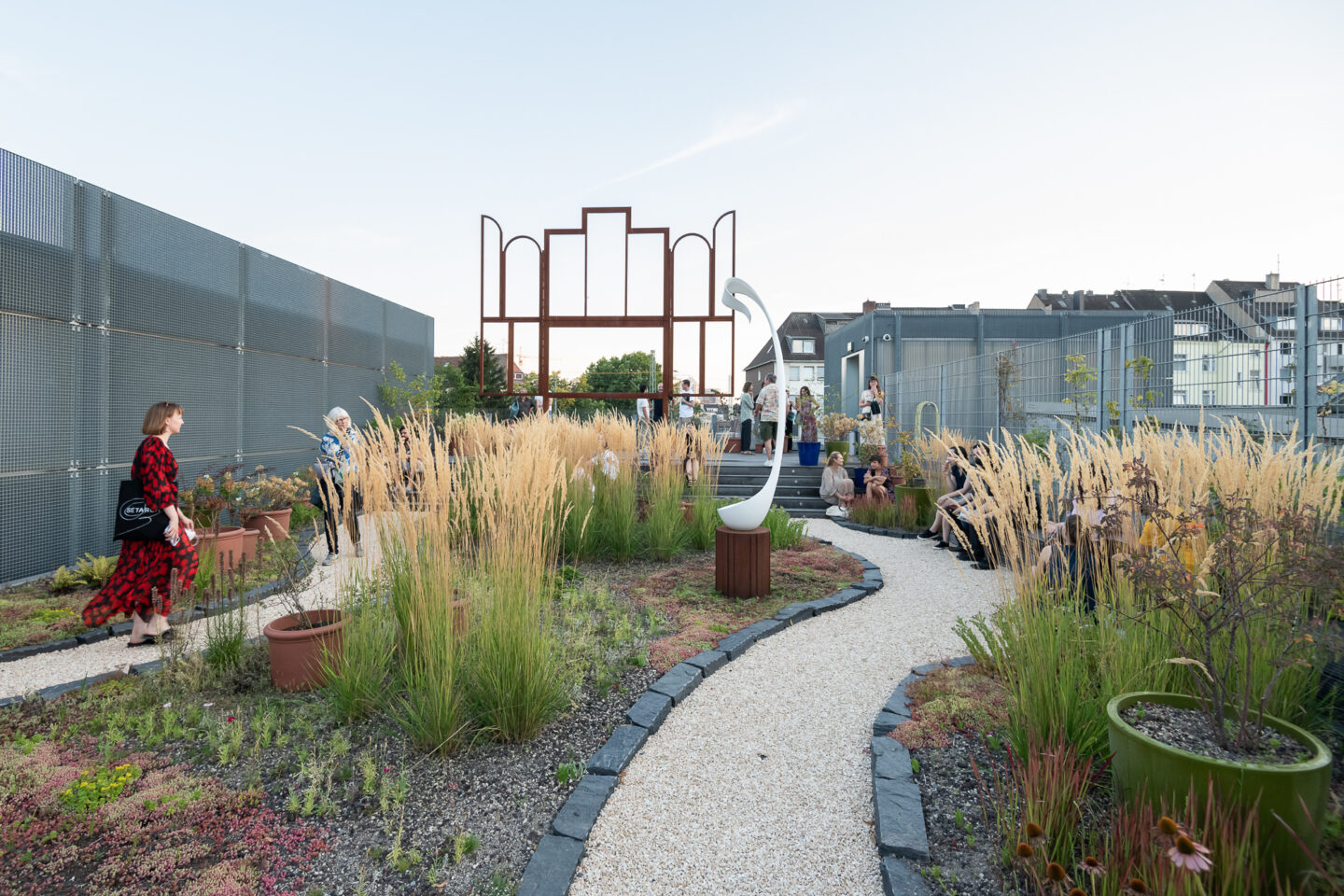

Located in a former glass factory at Birkenstraße 47 in Düsseldorf’s Flingern district is the Philara Collection, an impressive venue for contemporary art. Works from Gil Bronner’s private collection are presented on over 1,700 square meters, which also create a dynamic platform for temporary exhibitions and diverse cultural events.
Written by Tabea Ackermann.
Industrial charm and architecture
The Philara collection is housed in a former glass factory whose industrial charm was preserved during its conversion into an exhibition space. If you walk through the rooms today, you can still find notes that the glaziers scribbled on the pillars during their working hours. On the roof, visitors can now find a sculpture garden with a view of the train tracks that were once used to deliver materials and goods.
The former industrial area underwent a remarkable transformation by the real estate developer Gil Bronner. He has been collecting art since the mid-1990s, from up-and-coming talents from the Düsseldorf Art Academy to internationally renowned artists such as Thomas Ruff and Andreas Gursky.
The halls, which cover almost 2,000 square meters, not only offer space for the impressive permanent exhibition, but also for temporary installations and events.
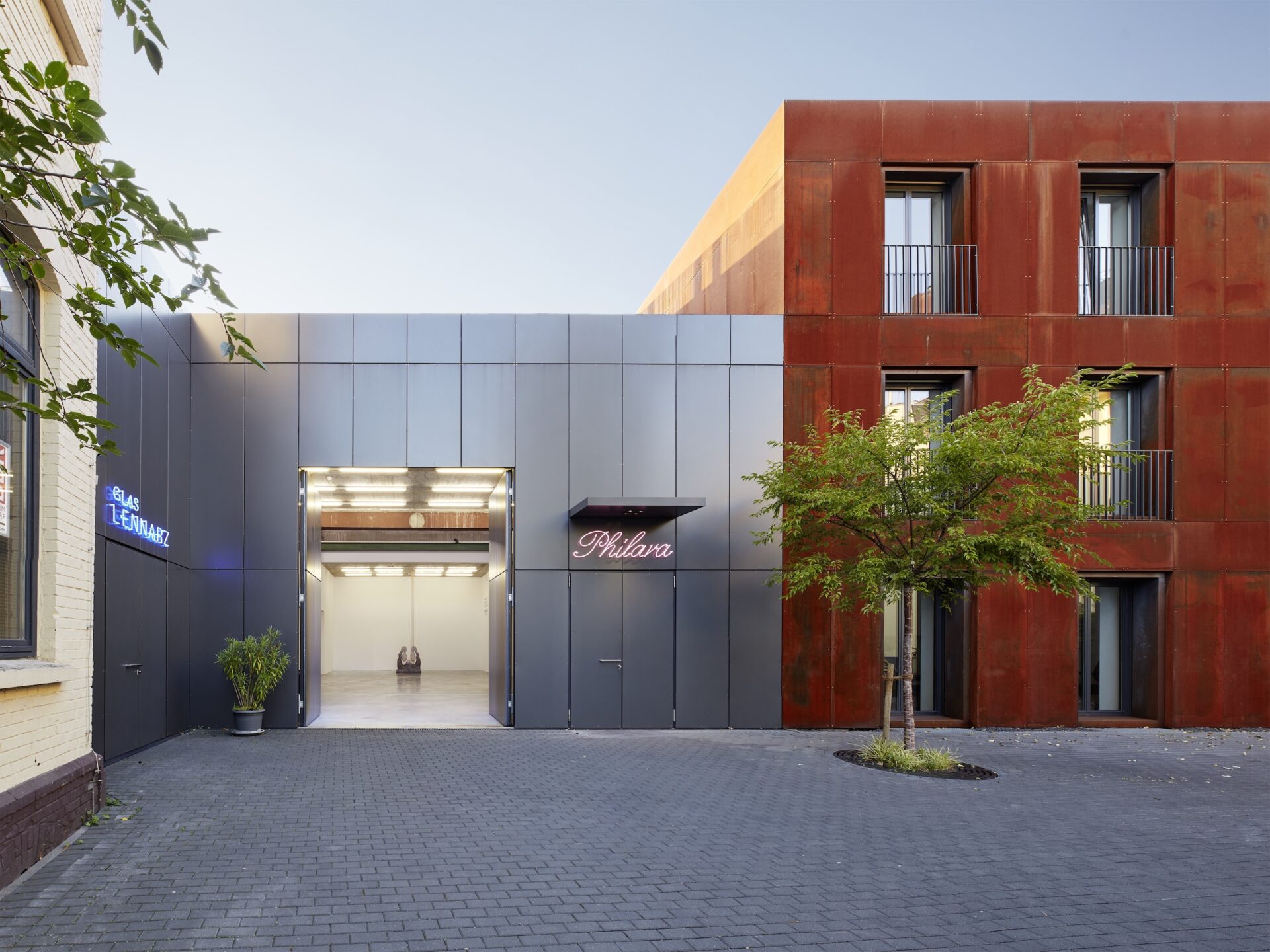
© Philara Collection. Photo by Paul Schöpfer
The Philara collection comprises a wide range of sculptures, installations, paintings and photographs. The sculpture terrace is home to various works by artists including Martin Kiesewetter and Andreas Schmitten. Particularly outstanding sculptures include Olaf Metzel’s “Kafka etc.” and one of the six versions of Kris Martin’s “Altar”.
The 5- to 9-meter-high exhibition halls provide space for the gallery’s permanent collection. Individual installations can be found in the smaller side rooms. The installation “Artichoke Underground” by Jonah Freeman and Justin Lowe comprises 13 rooms that are connected to each other over several levels. The installation explores various fictitious facilities, such as a Punjabi kitchen, a walk-in refrigerator or an incubator for researching plant consciousness. “Artichoke Underground” invites you to explore the labyrinthine structures and view them from multiple perspectives. The various rooms are based on different cultures and histories and explore the relationship between identity and culture.
In addition to the artworks, the Philara collection regularly offers artist talks, performances, discussion groups and special guided tours for families or, due to current circumstances, for native Ukrainian speakers. The wide range of offered activities makes the collection a place of exchange and strengthens the visitors’ connections to the artists and their work.
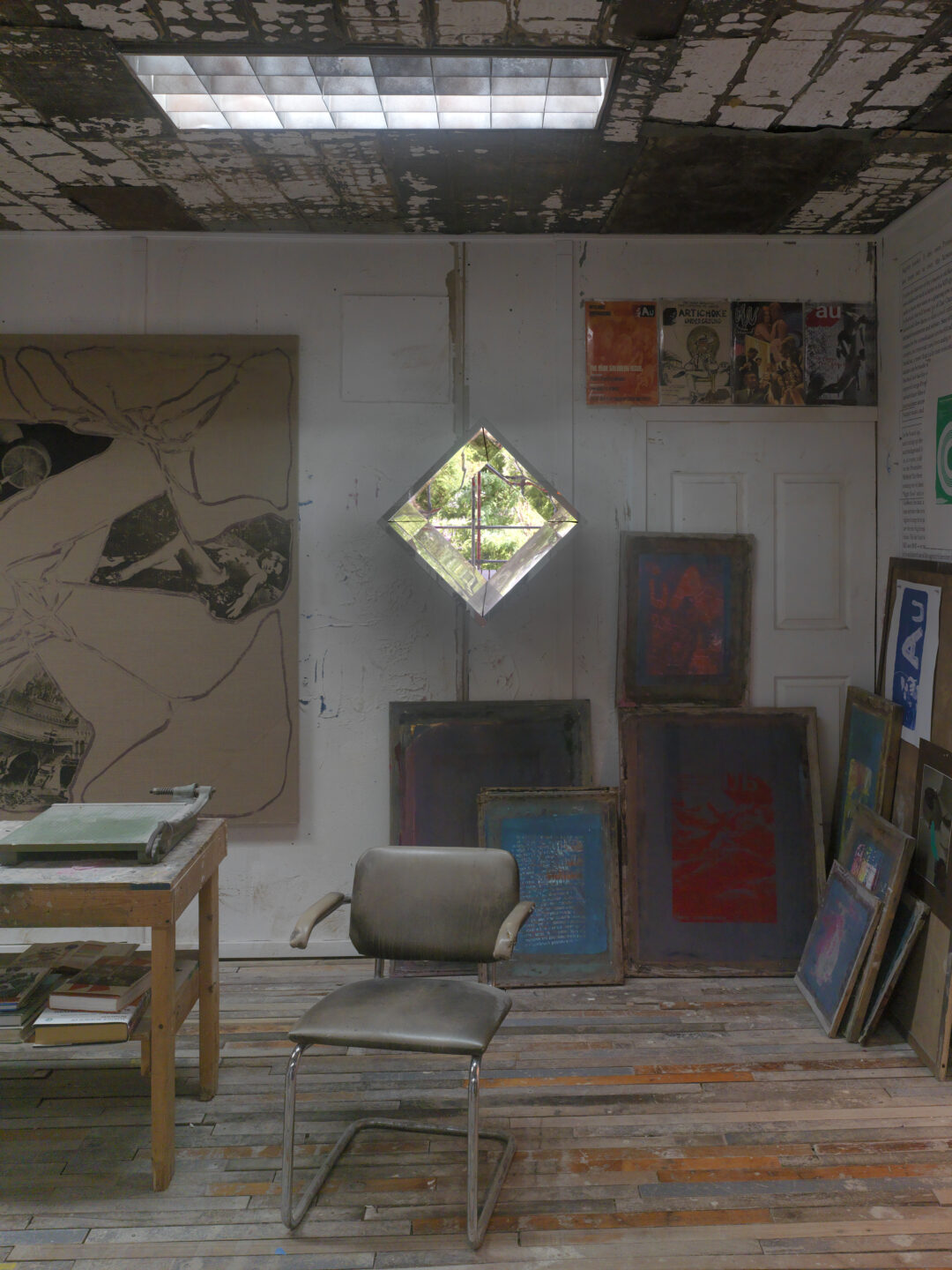
© Philara Collection. Jonah Freeman & Justin Lowe, Artichoke Undeground On Display, 2016.
Temporary exhibition “In Abwesenheit”
On March 3, 2024, the temporary exhibition “In Abwesenheit” (“In Absence”) will open at the Philara, showing analog and digital photography from the entire last century. The photographs explore themes ranging from absence and emptiness to belonging, nostalgia and fiction.
Èmilie Pitoiset’s installation “Giselle” – the title refers to the ballet of the same name – questions the original context of photographs and the identities of the people depicted. The main character of the classical ballet is a young woman who dies of madness and returns as a ghost. In her work, Pitoiset stages anonymous people from various photographs from the 1920s to 1950s. By referring to the tragic ballet, Pitoiset draws the viewer’s attention to the presence (or return) of the people from the photographs, but also to the physicality of the people shown, who can be seen in a variety of poses and postures, for example doing gymnastics in the garden or jumping into a lake. The theme of the pictures is always tipping points in movement. A balance that is captured in the photograph, in which movement itself always remains a dynamic momentum and represents the transition from one to the other, just as Giselle and the Wilis (female nature spirits) in the ballet embody a state that is located between life and death in the world of spirits. Pitoiset’s treatment of the images reflects their function as images of memory and invites us to take a critical look at perception, identity and the historiography of photography as a medium.
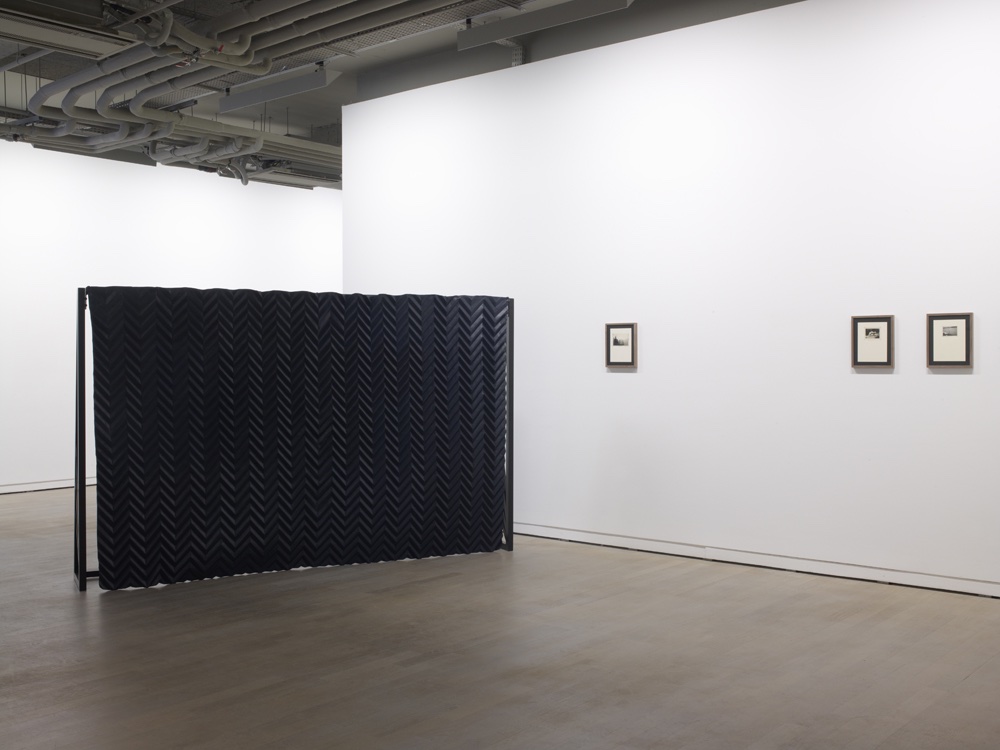
© Philara Collection. Èmilie Pitoiset, Giselle, 2012.
Ugo Rondinone’s work also focuses on the complex themes of corporeality and boundaries. In “I don’t live here anymore”, the artist shows himself as a timeless and androgynous cyborg. The various adaptations of photographs, such as the insertion of Rondinone’s face on female bodies, play with reality and question concepts such as gender and self-perception. Both the poses and the black and white shots are reminiscent of fashion photography from the 1960s. Despite the futuristic motifs and props, Rondinone’s photographs evoke a sense of longing. The title of the works presupposes the absence of the artist, although he is present in the photographs – particularly through his direct gaze at the viewer. Here, too, the definition of photography is played with. How far can the medium of photography be manipulated so that it is no longer a reflection of reality? The boundaries between binary gender roles, nostalgia and visions of the future, as well as the malleable and static nature of photography are challenged by this search for the self.
The mirror installation “Untitled Circle” by Germaine Kruip plays with the connection between reflection and photography without using the latter as a medium. The light reflection and its emerging shadows are nevertheless reminiscent of photographic devices and play with the perception of photography.
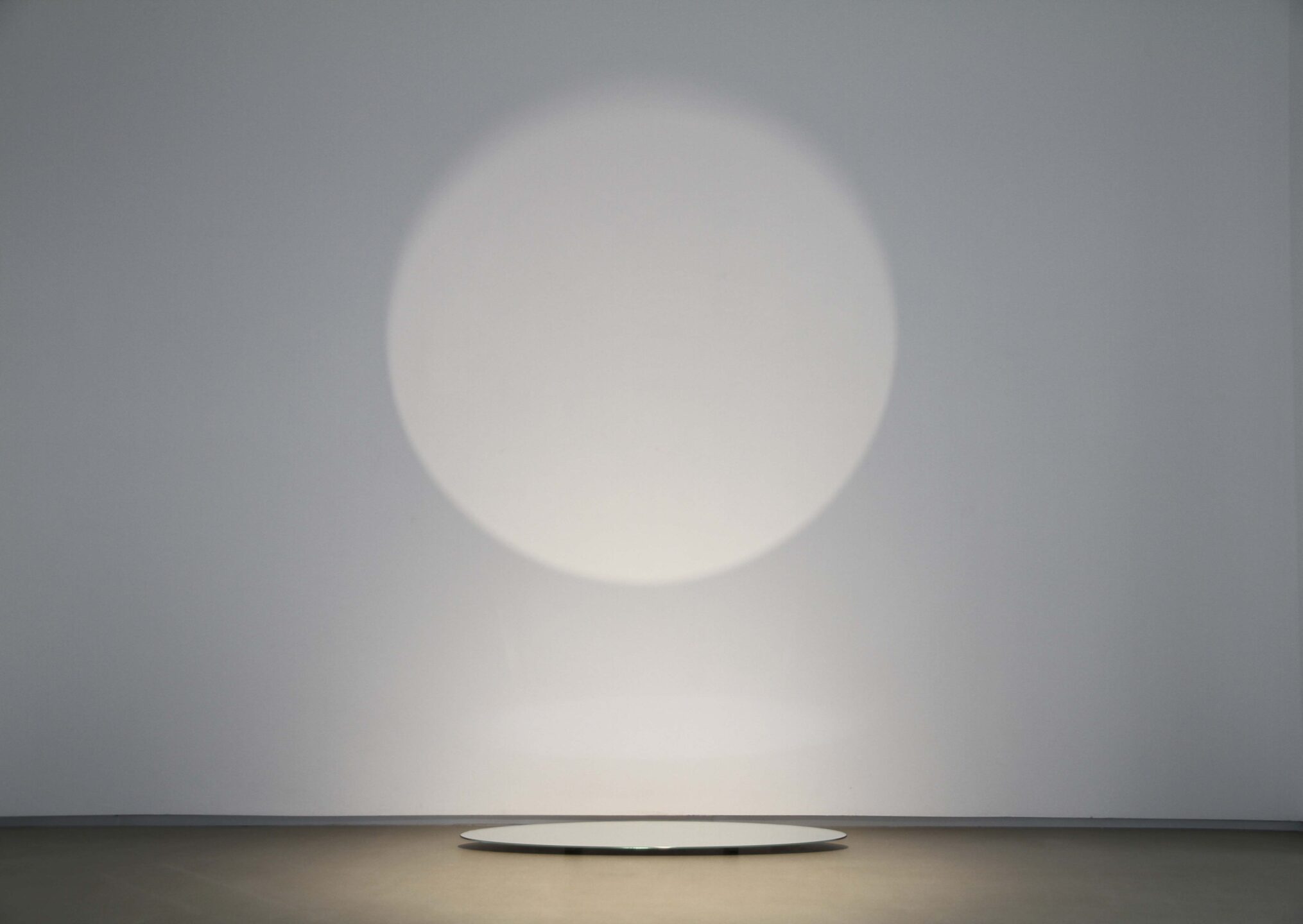
© Philara Collection. Germaine Kruip, Untitled Circle, 2013.
Other exhibiting artists include Thomas Ruff, Tamibé Bourdanné, Olafur Eliasson, Dominique Gonzalez-Foerster, Jan Paul Evers, Jef Geys, Thomas Grünfeld and Martin Parr.
The temporary exhibition “In Abwesenheit” can be seen at the Philara Collection from March 3, 2024 to September 8, 2024. The collection is open on Fridays from 4 – 8 pm and on Saturdays and Sundays from 2 – 6 pm. Guided tours are also offered every Saturday and Sunday at 3 pm. Further information can be found here.